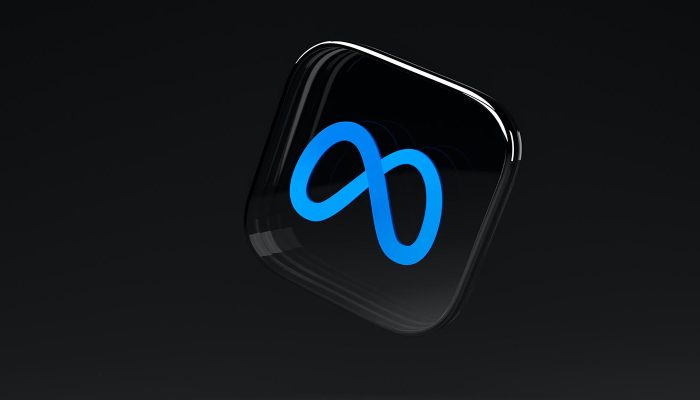When breaking down how to optimise your media budget for growth, there are a lot of things to take into consideration. To ensure your budget is truly optimised, it requires a lot of in-house knowledge of your sector, niche and target customers. Understanding their journey and how they move from being aware of your brand to becoming a customer (and then a repeat purchaser), can be a lot shorter or longer than you would expect. Knowing this, media can play a critical role throughout your growth marketing funnel strategy.
The power of paid media
The scale of paid media is undeniable and it can play a key role in growing your customer base by following the user through their journey from awareness to advocacy. Media gives us exceptional reach to our target audience and the ability to segment and personalise messaging based on where the user is in their journey ensures that you’re pushing them along the funnel..
With paid media, it allows you to quickly A/B test messaging, and the targeting and performance metrics are abundant to gain insight that not only helps your next paid media campaign – but all marketing campaigns going forward.
The mighty algorithms
Gone are the good old days where you would find the perfect 10,000 niche audience on Facebook and bombard them with the perfect product and see ROAS fly with your 30-day click and 7-day view attribution window. With the increase in privacy and further distrust in cookies, platform targeting has become less and less reliable. However, to combat this, the algorithms on these platforms have grown to be incredibly powerful to compensate.
Our partners in Google, TikTok and multiple other digital media channels are now consistently promoting the use of broad audiences. As I’m sure all marketers were, we were very sceptical at first but putting trust in the algorithm gods above can be fruitful. The algorithm understands that you can’t pigeon hole users into boxes anymore, and that user’s wants and needs are constantly changing.
This doesn’t mean you can no longer be creative with audiences and segmentation. 1st party data still allows for exceptional usage of personalised messaging and targeting. By first segmenting your data in your CRM and connecting them with your digital media platforms, you can sync up messaging between your email campaigns and advertising to provide omnichannel targeting throughout your growth marketing funnel. This 1st party data can also be used to create high-value lookalikes and customer surveys can help narrow down interest targeting.
I reiterate that it’s important to understand the user’s journey when segmenting your targeting for remarketing. When a potential customer has only briefly interacted with your brand, what messaging or content will be useful to them? When they have consistently interacted with your brand but still not purchased – what’s going to push them over the line? You also need to determine which channel will be best in delivering that content – and whether it’s more than just one. Understanding this is key and where true growth can accelerate.
Navigating channels and savvy budgeting
Today, almost every channel offers full-funnel targeting within their platform and your target audience likely spends their time on multiple different platforms. This is why it’s important to not only understand what channels your target audience are using, but also to ensure your messaging is consistent across each of them.
With this now being the case, the way I recommend allocating budget is working from the bottom of the funnel upwards. If I was given a fresh new account that was looking to advertise, I would ensure all bottom of the funnel activity was live and all low hanging fruit was being acquired. This not only helps the algorithm build up conversion data and start learning, but it guarantees you the highest potential return.
Within paid social and programmatic, this includes making sure dynamic retargeting ads are set up retargeting the highest-intent audiences. In Google Search, this would include branded and high-intent searches looking specifically for your product/service. The backbone of any SEO strategy will also make sure these high-converting keywords are the goal, although these are often the highest in competition but that’s where your SEO specialist can identify the highest opportunity keywords with less competition.
Once you’ve assessed the bottom of the funnel, you can then move towards the middle and then to the top – expanding gradually to ensure steady targets and looking at data along the way to begin to understand what success looks like. Of course, as budgets increase and targeting widens – ROAS and CPA’s begin to decrease. This is where A/B testing, optimisations and your friendly neighbourhood growth marketing experts come in to help you scale.
Test and gather intelligence
When you have your full-funnel campaigns set up across multiple channels and you are achieving your target CPA/ROAS – it’s easy to take a step back and run “BAU”. Although it’s unlikely one small change will make a massive improvement to performance, it’s about locating those small areas of improvement to provide an incremental increase in performance.
At Space & Time, we have a rigorous A/B testing process which includes a detailed roadmap of what we recommend testing, how we’re going to do it and what the outcomes are. We highly recommend testing different messaging, targeting, creative, ad formats and channels. There’s no end-game with testing, and there’s always room to improve.
Also, when testing messaging and creative, it’s not about finding the “perfect” one creative to put all of your budget into. Understanding your customer is very important, and one vital part of that is that every customer will have a different reason for buying and will resonate with a different message/creative.
Also, don’t be scared to make large-sweeping changes to measure the impact it has. For example, attributing the direct impact of the awareness generated from a channel can be incredibly difficult to measure. However, have you tried doubling spend in that channel for two weeks to measure the impact this has on direct and organic revenue? Of course, this needs to be carefully planned, but large tests like this can bring game changing results.
Success metrics that matter
The most important aspect of any successful campaign is understanding what success looks like and being able to attribute the success. After all, how can you know the campaign has performed well if you don’t have a target or a benchmark to aim for?
It’s key here to ensure you understand profit margins, lead conversion rates and past performance to set realistic SMART objectives. If you achieved an average ROAS of 3.2 last year, you’re not going to magically double this to 6.4 straight away no matter how great the agency you hire is (or what they promise you!).
Attribution is a tricky subject, and something that would require a full bible, but again it’s important to look at both channel performance and use a “one source of truth” such as Google Analytics as an aggregator. Meta may tell you it has a ROAS of 20, but Google Analytics will likely paint a very different picture.
This doesn’t mean you shouldn’t trust the channel’s attribution, but it’s important to take multiple data points into consideration before moving budgets around and making any large changes.
Recap
To recap on how best to optimise your media budget for growth:
- Understand your customer, what channels they use and what resonates with them.
- Ensure you are using more broad targeting with your prospecting activity to allow the algorithms to optimise and learn as much as possible.
- Use 1st party data to segment your audience, messaging and targeting.
- Understand that all channels offer a full-funnel approach now and you are utilising this across the board.
- Start from the bottom up, and ensure you are maximising budget to your best performing and lowest funnel campaigns.
- Put a testing roadmap in place to ensure you are making incremental changes to your performance.
- Understand what success looks like and put SMART objectives in place.
- Have one source of truth for your attribution and take multiple data points into consideration when reporting on performance and making adjustments.






